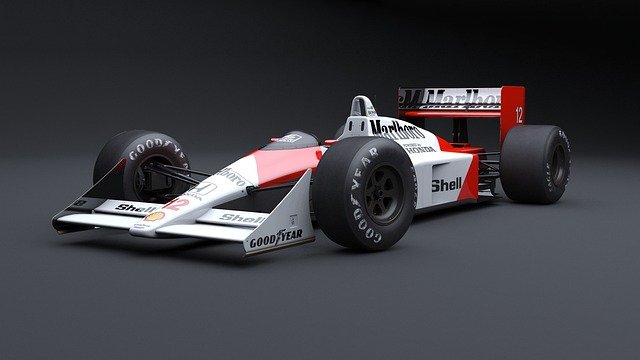Harnessing the Power of Kinetic Energy Recovery Systems in Motorsports
The roar of engines, the screech of tires, and the blur of sleek machines racing past—motorsports have long captivated audiences worldwide. But beneath the surface of this high-octane spectacle lies a world of cutting-edge technology, constantly pushing the boundaries of performance and efficiency. One such innovation that has revolutionized the racing world is the Kinetic Energy Recovery System (KERS). This ingenious technology not only enhances vehicle performance but also paves the way for more sustainable racing practices.

The Science Behind KERS
At its core, KERS is based on the principle of energy conservation. When a vehicle brakes, the kinetic energy of its motion is usually dissipated as heat through the brake rotors. KERS, however, harnesses this energy and stores it for later use. The system typically employs either a flywheel or an electric motor-generator coupled with a battery to capture and store this energy.
In a flywheel-based KERS, the kinetic energy is transferred to a high-speed rotating flywheel. When the driver needs an extra burst of power, this stored energy is transferred back to the wheels. Electric KERS, on the other hand, uses a motor-generator to convert kinetic energy into electrical energy, which is then stored in a battery. This stored electrical energy can be deployed to provide additional power to the wheels when needed.
KERS in Formula 1: A Game Changer
Formula 1, the pinnacle of motorsport, introduced KERS in 2009, marking a significant shift in racing strategy and technology. The system allowed drivers to deploy an additional 80 horsepower for up to 6.7 seconds per lap, adding a new tactical element to races. Suddenly, overtaking maneuvers became more strategic, and energy management became as crucial as tire management.
The introduction of KERS in F1 not only enhanced the spectacle for viewers but also served as a proving ground for energy recovery technologies. Teams invested heavily in developing and refining their KERS, leading to rapid advancements in the technology. These improvements have since trickled down to other forms of motorsport and even to road cars.
Beyond Formula 1: KERS in Other Motorsports
The success of KERS in Formula 1 has led to its adoption in other racing series. In endurance racing, particularly the 24 Hours of Le Mans, KERS has become an integral part of the hybrid powertrains used in the top LMP1 category. Here, the technology not only boosts performance but also plays a crucial role in fuel efficiency—a key factor in long-distance racing.
MotoGP, the premier class of motorcycle racing, has also been exploring the potential of KERS. Although the compact nature of motorcycles presents unique challenges for implementing energy recovery systems, several manufacturers have been testing variations of KERS in recent years.
The Environmental Impact of KERS in Racing
While KERS was initially introduced to improve performance, its environmental benefits have become increasingly important. By recovering energy that would otherwise be wasted, KERS helps reduce the overall fuel consumption of racing vehicles. This aligns with the growing emphasis on sustainability in motorsports and the automotive industry as a whole.
Moreover, the development of KERS in racing has accelerated the advancement of similar technologies for road cars. Regenerative braking systems, now common in hybrid and electric vehicles, owe much of their rapid development to the intense competition and innovation fostered by motorsports.
Challenges and Future Developments
Despite its benefits, KERS is not without challenges. The added weight of the system can offset some of its performance gains, particularly in series where minimum weight regulations are strict. Reliability was also a concern in the early days of KERS, with teams often facing technical issues related to the complex systems.
Looking to the future, the potential for KERS and related energy recovery systems is vast. As battery technology improves, we can expect to see more powerful and efficient electric KERS. Some researchers are even exploring the use of supercapacitors in place of batteries, potentially offering faster energy storage and deployment.
The integration of KERS with other advanced technologies, such as active aerodynamics and torque vectoring, could lead to even more sophisticated energy management systems in racing vehicles. These developments will likely continue to influence the design of road cars, particularly in the realm of high-performance electric and hybrid vehicles.
The Legacy of KERS in Motorsports
KERS has left an indelible mark on the world of motorsports. It has added a new dimension to racing strategy, enhanced the spectacle for fans, and contributed to the development of more environmentally friendly racing practices. Perhaps most importantly, it has served as a bridge between the high-performance world of racing and the growing need for sustainable transportation solutions.
As we look to the future of motorsports, it’s clear that energy recovery systems like KERS will play an increasingly important role. They represent not just a technological advancement, but a shift in the very philosophy of racing—embracing efficiency alongside raw power, and sustainability alongside speed. In this way, KERS and similar technologies are helping to ensure that the thrill of motorsports can continue to captivate audiences while also contributing to a more sustainable automotive future.





